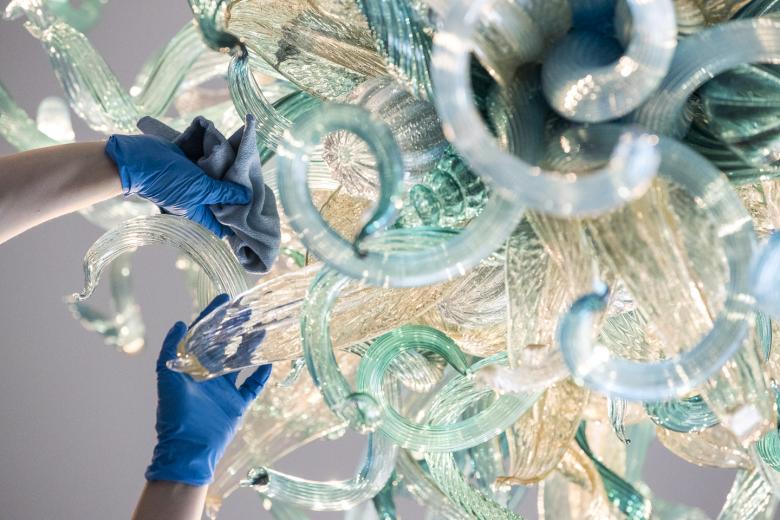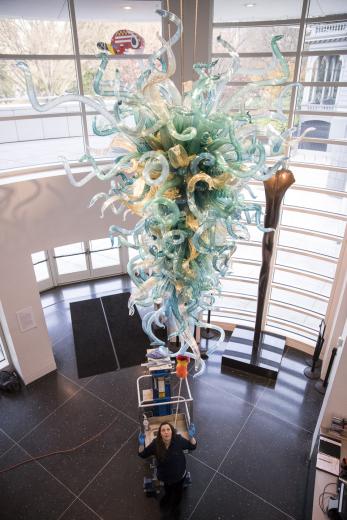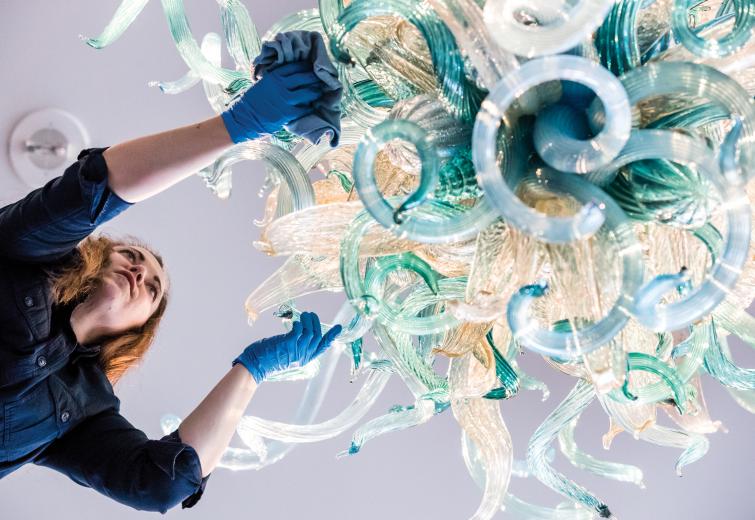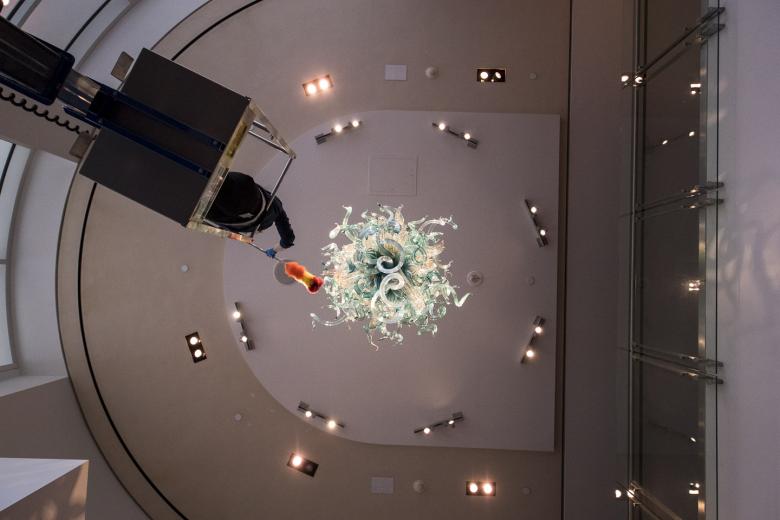
Jessie Svozil uses glass cleaner and a cloth rag to wipe down the “Golden Teal Chandelier” in the lobby of the Crocker Art Museum.

It’s important to always keep the artwork looking good: Dale Chihuly’s 2014 blown-glass sculpture is translucent, with colors representing Sacramento’s rivers and mining history.

Svozil used an electrostatic duster — with electrically-charged fibers that attract dust — before transitioning to the rag and cleaning fluid. She works in silence for two hours on a Monday while the museum is closed. Svozil or her colleague, who both work as preparators, (they move, unpack, hang and clean art) do a light cleaning on this contemporary sculpture every two or three months, with a more thorough cleaning done annually.

“If there’s dust after dust after dust, it becomes too much to clean,” says Svozil, who has worked at the Crocker since 2010.

As Jessie Svozil uses a duster on each individual piece of the “Golden Teal Chandelier” hanging from the lobby ceiling in the Crocker Art Museum, the sculpture moves ever so slightly.
![“I’m trusting [the installers] but at the same time, I’m responsible for anything that happens here,” she says. On a rare occasion, Svozil will also “clean” the tops of frames of historic paintings lining the museum’s walls, which basically means very gently dusting the air atop each one so to avoid touching the delicate frames.](/sites/main/files/imagecache/gallery/main-images/0317_dept_snap_kj_embed6_0.jpg?1577874530)
“I’m trusting [the installers] but at the same time, I’m responsible for anything that happens here,” she says. On a rare occasion, Svozil will also “clean” the tops of frames of historic paintings lining the museum’s walls, which basically means very gently dusting the air atop each one so to avoid touching the delicate frames.

Handling artwork, especially pieces that might be hundreds of years old, puts them more at risk for becoming worn down or damaged.
![“Some of [the dirtiness] is considered part of the antique of the frame and it’s not going to come off unless a conservator does it,” she says. Artwork on loan to the Crocker will often come with an exhibit pamphlet that stipulates exactly how — or more likely how not — to clean each piece.](/sites/main/files/imagecache/gallery/main-images/0317_dept_snap_kj_embed7_0.jpg?1577874530)
“Some of [the dirtiness] is considered part of the antique of the frame and it’s not going to come off unless a conservator does it,” she says. Artwork on loan to the Crocker will often come with an exhibit pamphlet that stipulates exactly how — or more likely how not — to clean each piece.


